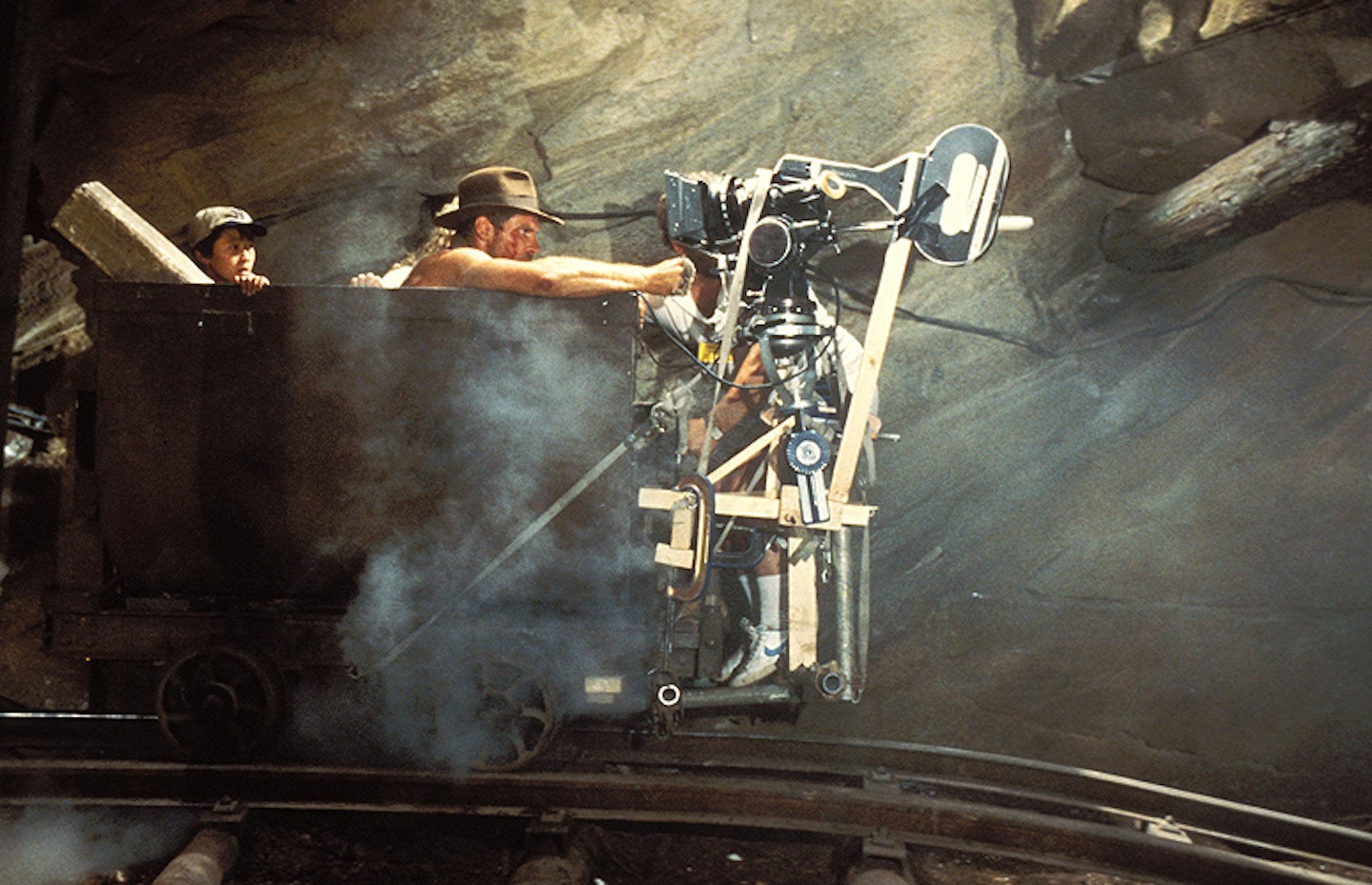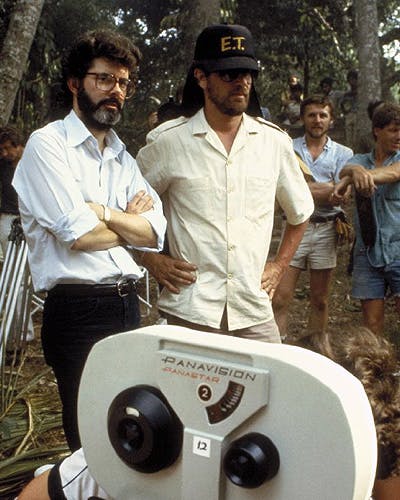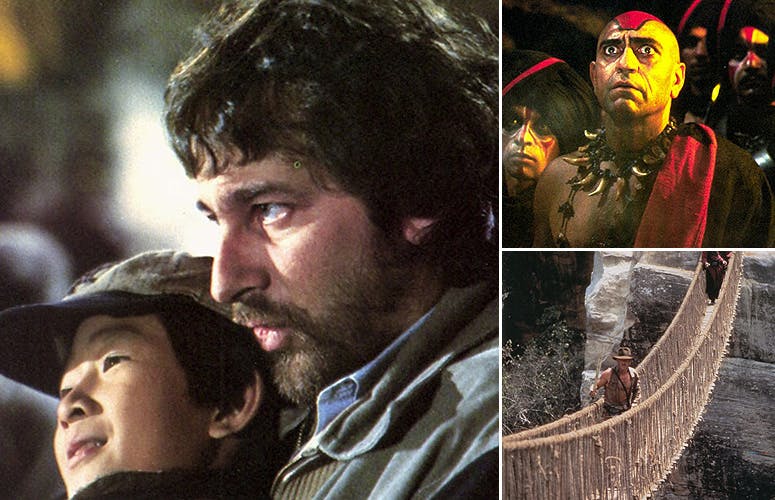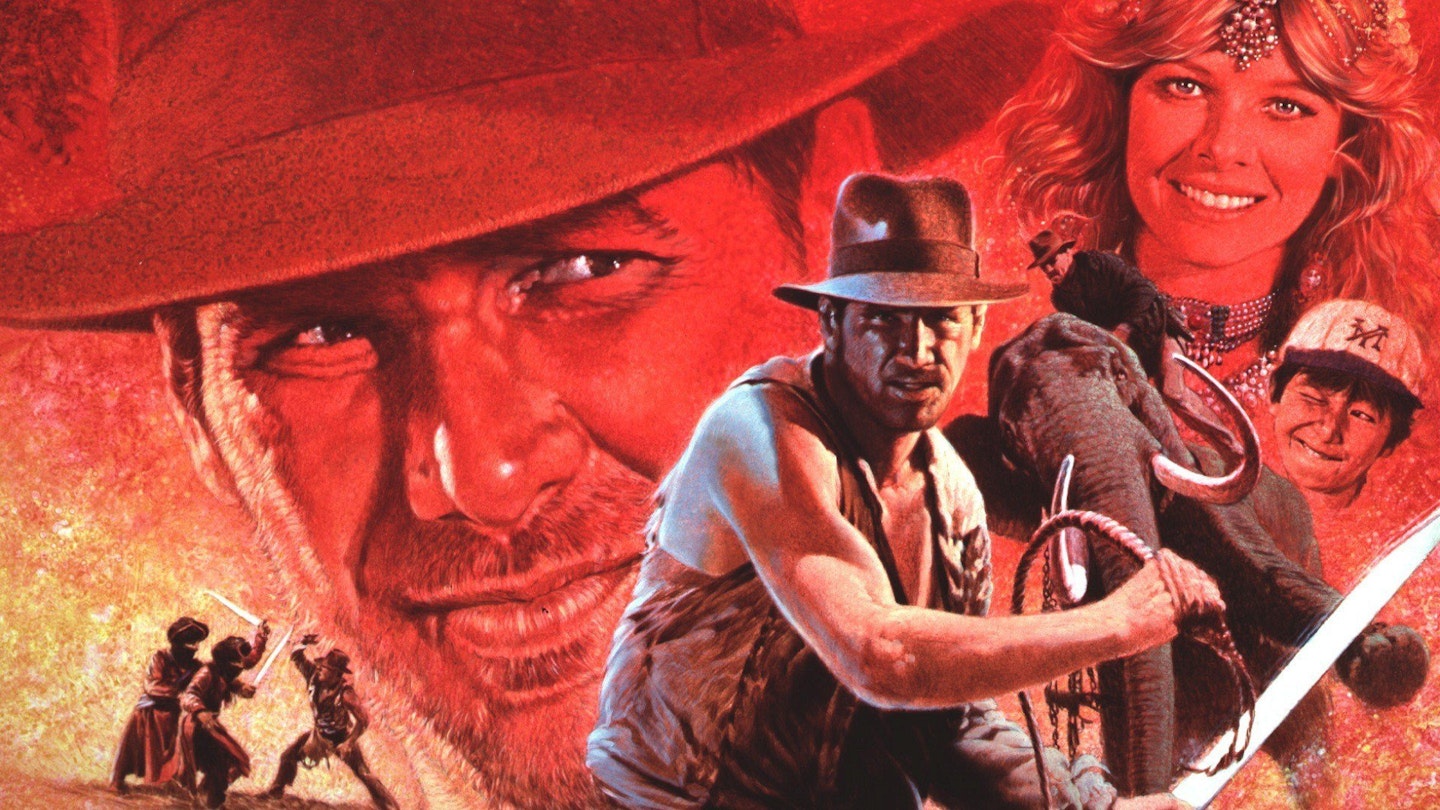This article first appeared in issue 227 of Empire magazine. Subscribe to Empire today{

Holy Smoke! Crash Landings!
Kate Capshaw (Willie Scott): Temple Of Doom is the forgotten Indiana Jones movie. I was laughing with someone when they re-issued it as a three-pack. I said, "Thank goodness it's a three-pack, or we wouldn't have made the cut."
George Lucas: You learn a million things on every movie. Obviously, in the sequels, we struggled to keep things going. It's not like Star Wars, which is basically one story cut off into a number of little pieces. These were real sequels that actually had no connection to the one before.
Steven Spielberg: I think Temple Of Doom was ahead of its time for my own sensibility and exactly right on schedule for George's. George was going through a dark period. He certainly inspired [Irvin] Kershner to shoot a very dark second act in the first Star Wars trilogy and he wanted the second Indiana Jones to be very, very, dark. And I wasn't there. I'm certainly there now in my filmmaking, as you've probably witnessed ever since Schindler's List. Before that, it was a bit of a struggle against common sense to go as dark as we did.
Lucas: Part of it was I was going through a divorce, Steven had just broken up and we were not in a good mood, so we decided on something a little more edgy. It ended up darker than we thought it would be. Once we got out of our bad moods, which went on for a year or two, we kind of looked at it and went, "Mmmmm, we certainly took it to the extreme." But that's kind of what we wanted to do, for better or worse.
Spielberg: We all collaborated together - the screenwriters, Willard Huyck, Gloria Katz, George and I - in writing the screenplay, so it wasn't like I was on the outside under protest. But it really went against my nature in the '80s.
%20%20*%22I%20think%20Temple%20Of%20Doom%20was%20ahead%20of%20its%20time%20for%20my%20own%20sensibility%20and%20exactly%20right%20on%20schedule%20for%20George's.%20George%20was%20going%20through%20a%20dark%20period.%22*%20*Steven%20Spielberg*%20%20
Capshaw: There's nothing like a Nazi for a bad guy. We didn't have a great bad guy.
Roshan Seth (Chattar Lal): I wasn't really able to deliver the role of Chattar Lal. What Spielberg wanted was an Oxford-educated Indian smoothie who was a crook. If I were to play it now, I would really know how to play that. I didn't at that time.
Capshaw: I think we were constantly stretching and reaching to be as brilliant as the first one and we just didn't have the story. We had children at risk - where's the fun in that? There were also 100 more screams than we needed.
I'm Allowing You To Tag Along
Capshaw: I think George and Steven had been looking for "the girl" - by the way, even while we made the movie they always referred to her as "the girl" - and the casting director suggested me because I had just come out to Los Angeles and there is always heat surrounding the new girl. At that time, I didn't 'do' sequels. And I didn't 'do' action adventure. For my screen test - with Steven, not Harrison - it was a scene between Willie and Indy where she's really hungry. It's difficult to find audition scenes when there's so much action. You can't just go in and yell.
Spielberg: I went to see Harrison and said, "I have 19 girls on tape but I'm only going to show you one." I put Kate's tape in and he immediately said, "That's the one!"
Seth: I had the terrible hots for Kate Capshaw!
Jonathan Ke Quan (Short Round): I had never been on a movie set. My brother went to the open call for Short Round so I tagged along, and the casting director asked me to read for him. I couldn't even pronounce the words. The next day we got a call from Steven's office. I remember my mom dressing me in a three-piece suit. I didn't know who Steven, George or Harrison were. I hadn't seen Raiders Of The Lost Ark and I didn't even know this was a sequel. After the shoot, Steven screened all his movies for me.
Hang On, Lady, We Go For Ride
Capshaw: We started in Sri Lanka, right in the middle of the movie, struggling to find who we were. Harrison was constantly reminding me that I was a gal in a B-movie and that I didn't need to put notes in the margin. "Faster and funnier" was all the direction we got.
Harrison Ford: My back was injured by riding elephants. It was a spinal injury and that was difficult, obviously. Luckily, I had a very good relationship with stuntman Vic Armstrong - he is a really smart guy at devising how these things would and could be done. But he also understands storytelling. I found him to be very wise about Indiana: he added things to the character.
Vic Armstrong (Stuntman/Stunt Co-ordinator): I turned up to work, said, "Where's H?" and they said, "Oh, he's on a plane back to the States to get special treatment on his back, fusing it together." Steven said to me, "We'll shoot on you. I walked up to five feet away from you in Tunisia and thought you were Harrison, so I'll shoot up to five feet away from you and even closer when you've got the costume on." We shot for something like five weeks, I even did dialogue with the camera over my shoulder so they could see the facial muscles moving.
Frank Marshall (Producer): The bugs were much harder to work with than the snakes. You can arrange a pile of snakes. That's impossible with bugs. People were also much more scared of the insects. Every once in a while you'd hear this shriek when the bugs found their way on to the tap-dance rehearsal stage - a bad place for any bug to be.
Capshaw: The bugs were really gross, really bad. I think I took a Valium. Steven was there every second, he wasn't gonna make me do anything that he wouldn't stand next to me for. The bugs would go in and out of your clothes - you couldn't make that not happen.
Spielberg: The most exciting thing for me - and it was my idea - was doing the chamber of spikes. For me to be able to turn that idea into something with bugs and a little coda where Willie's butt hits the trigger mechanism so the whole thing begins again, and to have the last shot of Indy reaching in and grabbing his hat just before the secret slab of concrete closes... that was my favourite thing to shoot on that entire production.
Quan: It was a very, very happy time. We all stayed in the same hotel in Sri Lanka and we'd go back to Harrison's hotel room and hang out. He even taught me to swim. On the set, Harrison played jokes on Steven all the time. There's one shot where the mine car pops up into frame. Right before we did it, Harrison got ice-cream cones and gave some to me and Kate. When Steve said, "Action," we all popped up with ice-cream smeared all over our faces. Steven just said, "That's great, print that one!"
Seth: Amrish Puri, who played Mola Ram, was a very nice guy. He was operatic; he couldn't have been a better villain. But I have to say this: Indian people are very embarrassed when they see one of their own playing roles like that.
Capshaw: On the mine-car set, Ke (Short Round) was going to hit the slave-master with a bat. The bat broke and a splinter hit me in the eye. The next morning, I had a real shiner. When I next came out on set, every single crew member, including Steven, had a make-up black eye!
%20*Spielberg%20and%20Jonathan%20Ke%20Quan%20share%20a%20moment%20on%20set%20(left),%20Amrish%20Puri%20as%20Mola%20Ram%20(top%20right?auto=format&w=1440&q=80)
Prepare To Meet Kali
Kathleen Kennedy (Associate Producer): The yanking out of the heart was the one thing that put us over the edge. That was the same year we made Gremlins and put the mogwai in the microwave.
Capshaw: We started PG-13. We were pushing the envelope for what was appropriate for kids to look at.
Quan: Steven keeps the mood very light. We didn't know we were making a very dark movie until it came out and we read all the reviews.
Seth: The banquet scene was a joke that went wrong. I got a great deal of flak for it because people kept saying, "How does an intelligent man like you agree to be in a film which shows Indians dining on beetles and eels?" Steven intended it as a joke, the joke being that Indians were so fucking smart that they knew all Westerners think that Indians eat cockroaches, so they served them what they expected. The joke was too subtle for that film.
Capshaw: I don't think there was a good review. I was blind-sided by it. The thing that surprised me the most was that the critics, women critics in particular, were very critical of Willie Scott, as if we were making a political statement and I was doing nothing for my sisters. I found it odd that it was an action-adventure film and we were meant to be doing message work.
Kennedy: You really think I'm going to enter a discussion about Willie as a female role model when Willie is now Steven's wife? You don't wanna go there.
I Understand Its Power Now
Seth: Let me tell you - the first 15 minutes of Indiana Jones And The Temple of Doom are perhaps the greatest 15 minutes in cinema. They are all about what cinema should be: sitting on the edge of your seat in excitement. Lucas: There's some good sequences. I love the movie, it's just slightly darker in tone and not as fun as the first.
Ford: I felt it was funny and explored interesting, dark places. That scene where he takes the heart out, that was a new thing, a dark thing. But I enjoyed that about it. It also possesses some of the craziest action, the most energy. I think it is a good film. They all are.
Capshaw: If I walk into a room and it's on, we both have to sit down as we can both remember it like it was yesterday. We'll go, "Oh yeah, remember that? You weren't talking to me during that part," or, "Oh, that was a really big flirt day." It was so much fun.
Spielberg: The second film I could have done a lot better if there had been a different story. It was a good learning exercise for me to really throw myself into a black hole. I came out of the darkness of Temple Of Doom and I entered the light of the woman I was eventually going to marry and raise a family with.
Head back to our Indy hub for more exclusive features and interviews celebrating all four Indiana Jones movies.
 ![] Empire Magazine
![] Empire Magazine
For the best movie coverage every month, make sure you subscribe to Empire magazine - also available to download on iPad.


